|
We may be well-acquainted with Lenten practices and devotions such as giving something up, abstaining from meat, or praying the Stations of the Cross. It can be more difficult, however, to name ways to observe the Easter season.
Yet in the Preface of the Eucharistic Prayer at every Mass during the Easter season, we hear: “It is truly right and just, our duty and our salvation, at all times to acclaim you, O Lord, but in this time above all to laud you yet more gloriously, when Christ our Passover has been sacrificed… Therefore, overcome with paschal joy, every land, every people exults in your praise and even the heavenly Powers, with the angelic hosts, sing together the unending hymn of your glory…”[1] What is “paschal joy” and how do we praise the Lord “more gloriously” in the Easter season? It is unreasonable to expect anyone to will themselves to be happy at any given moment, much less for an entire season. But joy is not the same as happiness, nor is it the absence of sadness. Joy is a fruit of charity. It flows out of love; it results from a participation in goodness. We feel joy in the presence of someone or something we love; we rejoice in the well-being of our loved ones. If our Lenten observance is focused on charity—particularly acts of charity such as prayer, fasting, and almsgiving—then joy flows naturally from them. The disciplines that turn our gaze outward to God and neighbor, the sacrifices we make, are all a participation in goodness, an act of love. Paschal (Easter) joy, then, can be seen as the fruit of our Lenten journey. Our Lenten efforts are not meant to be temporary measures. They are intended to effect lasting change in us, to conform us more profoundly to our Lord who died but has been raised. What can we do then, so that we don’t simply drop our Lenten observance now that Easter has arrived? How can we instead allow these observances to take root in such a way that they enable us to celebrate the Easter season more fully and joyfully? Consider one or more of the following suggestions to cultivate paschal joy and fill each of the fifty days of the season with festivities and devotions:
Click here for more resources to accompany you this Easter season. [1] Preface I-V of Easter, Roman Missal, Third Typical Edition. [2] Directory on Popular Piety and the Liturgy, no. 150, no. 152. [3] Directory on Popular Piety and the Liturgy, no. 153. [4] Directory on Popular Piety and the Liturgy, no. 154. [5] Directory on Popular Piety and the Liturgy, no. 155. [6] Cf John Paul II, General Audience, Wednesday, 30 May 1979
0 Comments
I often find myself avoiding sad and painful things, searching to find a silver lining and help make me or someone else feel better. It can be at the cost of seeming empathetic, too, like avoiding sitting with the pain and instead dealing with it head on. My immediate reaction is to fix something broken or to solve a problem instead of to actually let it sink in and affect me. Growing up, this was a coping mechanism that I’ve been able to turn into a strength of mine as a teacher, making split-second decisions and problem-solving throughout the day. Personally though, I think I need to wrestle with it. As we enter into the saddest, most heart-wrenching day of the year, my gut says “avoid the topic, think about Sunday,” but instead I’m going to go a little deeper for Good Friday this year.
Good Friday was what I can only imagine to be a marathon of a day for Christ to endure, only to end with his sacrifice in the Crucifixion. The brutality and agony that he must have felt while carrying his cross can be overwhelming to think about. He carried it bleeding, tired, hungry, and aching from the weight of such an enormous cross. I’ve never experienced pain like that, so I’ve found it easy to skip through, acknowledging it happened and moving on. But this is where I’ve gotten it wrong: Christ did all of that for me, for us, for every human being on this Earth. Jesus did that so we wouldn’t have to experience it for ourselves and could be together with God in his Kingdom one day. This day is the one I shouldn’t overlook. The Stations of the Cross, a 14-step reflection on the Passion of Christ, is the perfect place for me to start contemplating Christ’s sacrifice on Good Friday. While there are many versions of this devotion, I’m using the Stations of the Cross in the Spirit of St. Vincent Pallotti to help me think more clearly about the meaning of Good Friday. There are many different Stations of the Cross to use depending on your spirituality, vocation, or age. In my classroom I like to use a coloring book version and when I taught 2nd grade, we liked this one for children. For this year’s study, I think I’ll also try this Scriptural Stations of the Cross from the USCCB’s website, located on the Catholic Apostolate Center’s resource page as well. I hope to think more deeply and clearly about the Passion of Christ and appreciate a little more heavily the price he paid for me, everyone I know, and beyond. There are many signs throughout this Triduum that we can think about in addition to praying with the Stations of the Cross. Tonight on Holy Thursday, the tabernacle was emptied and colored cloth was placed there instead. There will be no consecration of the Eucharist until the Easter Vigil and instead of Mass, we pray, remember, and venerate the Cross. The color for Good Friday’s services changes too: red is now the color we see and use to remember his blood shed for us. Red was also the color used on Palm Sunday, when Jesus made his way through palm branches on a donkey into the City of Jerusalem in joyous celebration. These signs in church help us remember all that Christ did for us. We may take his sacrifice for granted possibly because it is easier to avoid the sad and scary realities about the time between Jesus’ arrest and Easter morning. We also may be too “busy” to stop and reflect on not just the happy moments when Jesus was teaching, but also how he gave His life to save ours. In our lives, we must continue to appreciate and enjoy the good parts of Christ’s life and ministry. We can live knowing that the end is happy and He is Risen on Easter morning. But without Good Friday, we wouldn’t have Easter Sunday. Tomorrow on Good Friday, I invite you to join me on this sad and painful day as I look more deeply at the Stations of the Cross. For additional resources, please visit the “Additional Lenten Resources” page on the Catholic Apostolate Center page. Editor's Note: In honor of the second anniversary of WYD Krakow (2016) and in anticipation of WYD Panama (2019), we are reposting this wonderful reflection from WYD 2016 on the role of young people in the Church.
Who was it that claimed the Church is irrelevant to young people? Who was it that claimed young people did not seek or yearn for Christ? My experience of World Youth Day (WYD) has shown me otherwise. WYD is the largest gathering of Catholic young adults in a series of events sponsored by the Church. First initiated by St. John Paul II in 1985, WYD is celebrated at the diocesan level annually and at the international level every two to three years at different locations around the world. People do not attend as tourists, but rather as pilgrims, since the nature of the composite events are religious in character. Typically, pilgrims will arrange lodging in the host city before participating in the opening ceremonies, catechesis, and cultural exhibitions. Taking advantage of all the host city has to offer, pilgrims will usually also spend time exploring the region (especially churches), shopping for religious souvenirs, and tasting the local cuisine… and very rarely alone! As the locals are quick to notice, the host city will be absolutely inundated with pilgrim groups, each identified by various flags, shirts, and chants. In spite of the inconveniences experienced (such as crowds, traffic, and long lines), for the most part, the locals are excited to greet so many peoples; local businesses are especially happy to cater to the pilgrims’ needs. The focus of WYD events centers around the arrival of the pope: everyone wants to hear what the Holy Father has to say to the young pilgrims at various sites and events. Traditionally, the Holy Father will address crowds from his residence, during Masses, Stations of the Cross, and the overnight vigil during which millions camp out together in prayer. The conclusion of the Vigil Mass the following day signals the end of the official WYD program, though at that time the next host city is formally announced. I’ve been blessed to have been able to attend two World Youth Days, in Rio de Janeiro, Brazil in 2013 and in Kraków, Poland this year. So much more than a sightseeing trip, WYD for me has been all about seeing how God’s love for us manifests itself in each culture. Encountering millions of young believers (in addition to curious observers) who are inherently joyful in their witnesses to the Lord, I am especially delighted to see them interact with each other through songs, chants, prayers, and games during scheduled events or out in the streets. For me, some of the most powerful witnesses given happened outside of the official program (though seeing millions kneel before the Blessed Sacrament with lit candles during the vigil was indescribably moving). I remember seeing a group of Italian pilgrims run over to help a local disabled man carry groceries up a number of street stairs; another group immediately rushed to comfort a female pilgrim who had broken down during our 12 kilometer (about 7.5 miles) hike from the site of the overnight vigil. Simple acts of love like that really touched me as being authentically Christian: to love in even the smallest matters and, by doing so, answering the call given at the end of Mass, “Go in peace to love and serve the Lord.” Pope Francis gave many beautiful and encouraging addresses to those assembled in Poland, but I was most impacted by an action of his. At the beginning of Mass at the great Shrine of Czestochowa, Pope Francis missed a stair step and fell, thankfully uninjured. He later explained that, "I was watching (an image of) the Madonna, and I forgot the step." He literally fell for Our Lady. When I heard the news, I remembered a similar experience of my tripping on the stairs upon seeing a lovely peer of mine go by. To have that ineffably tender and peaceful focus on the Blessed Mother, to be in awe of the Virgin, reflects the perfect love God has for her and for each of us. WYD may have ended, but the mission entrusted to the young pilgrims by Pope Francis still burns in our hearts: Launch us on the adventure of mercy! Launch us on the adventure of building bridges and tearing down walls, barriers and barbed wire. Launch us on the adventure of helping the poor, those who feel lonely and abandoned, or no longer find meaning in their lives. Send us, like Mary of Bethany, to listen attentively to those we do not understand, those of other cultures and peoples, even those we are afraid of because we consider them a threat. Make us attentive to our elders, as Mary of Nazareth was to Elizabeth, in order to learn from their wisdom. May each of us always endeavor to accomplish it! To learn more about the October 2018 Synod on Young People, visit our Synod Portal. To learn more about WYD 2019 visit our WYD Panama Portal. Exult greatly, O daughter Zion! Shout for joy, O daughter Jerusalem! Behold: your king is coming to you, a just savior is he, Humble, and riding on a donkey, on a colt, the foal of a donkey. Zechariah 9:9 So begins the first liturgy of Holy Week on Palm Sunday. We hear these words referenced in the first of an unusual two Gospel readings during the procession into the church. We start our celebration of Palm Sunday, appropriately, by proclaiming and then reenacting the story in Matthew’s Gospel of Jesus’ entry into Jerusalem, a moment of great joy and excitement for the inhabitants of the city. Those in the congregation welcome the priest, who enters the church in persona Christi, as we echo the words of the people of Jerusalem, “Hosanna in the highest!” What a happy occasion! The Messiah, the One whom the prophets foretold, has come! How fickle this joy seems, though, when we get to the Passion narrative. In a matter of minutes, we go from crying, “Hosanna!” to “Crucify him!” One minute, we’re giving Jesus a king’s welcome. The next, we’re condemning Him to death. I know I’m not the only one who feels a dagger through his heart every time we say—loudly—that refrain of condemnation. How dare I welcome Christ with such exuberance, knowing what I’m about to do to Him? Quite the emotional roller coaster, with Mass only halfway over! Holy Week is exhausting. I find it the most taxing part of the liturgical year. Starting with Palm Sunday, I’m attending Masses, praying the Stations of the Cross, and singing with the choir for days on end, practically turning the Triduum into a 3-day long vigil. In recent years, I’ve taken to spending Good Friday on pilgrimage to the National Shrine in Washington, D.C., to place myself in an intentional state of prayer and reflection. So why do I do this to myself? Why get on this roller coaster and make myself so physically, emotionally, and spiritually drained by the time Easter morning arrives? Quite simply, it’s because I love it. It’s the most rewarding experience of prayer that I have all year. On Palm Sunday, we’re reminded of what we’ll bear witness to in the days to come. We’re invited to reflect on what’s about to be re-presented in a real-time reenactment of the focal point of Christ’s entire earthly life. At the Chrism Mass on the morning of Holy Thursday, we bear witness to the consecration of holy oils for use in the upcoming year’s sacraments. We also see the gathering of all our diocesan priests, who renew their vows and participate in probably the largest concelebration of the year. It’s a moving and impressive sight. Later on Holy Thursday, we see the reenactment of the Last Supper, the very institution of the Eucharist we celebrate to this day. We’re reminded, too, of the great humility we’re called to emulate: “If I, therefore, the master and teacher, have washed your feet, you ought to wash one another’s feet.” (John 13:14) On Good Friday, we once again take up the cries of, “Crucify him!” as we see the events of Christ’s Passion and death unfold before our eyes. We’re called toward the sanctuary to kiss the gruesome device of our salvation, the ancient instrument of punishment used to redeem all of mankind. And after an unceremonious Communion service, the liturgy suddenly pauses and we just go home. The Church holds its breath as we wait. And then, finally, the Easter Vigil—the happiest day of the year, of all history! We hear the no longer fickle, but truly joyous words of the Exsultet, the Easter Proclamation: Exult, let them exult, the hosts of heaven, exult, let Angel ministers of God exult, let the trumpet of salvation sound aloud our mighty King's triumph! Be glad, let earth be glad, as glory floods her, ablaze with light from her eternal King, let all corners of the earth be glad, knowing an end to gloom and darkness. If I arrive at Easter morning feeling exhausted but strengthened, it means that I've truly entered into Holy Week, walking with Christ as He always walks with me. This Holy Week, may we walk more closely with Christ on His journey towards the cross, knowing that this journey continues with His resurrection. It is Christ's resurrection, His triumph over sin and death, that gives our Lenten journey meaning and enables us to exult with the Church and be glad! Question for Reflection: How can you enter more deeply into Holy Week in order to better celebrate the joy of Easter Sunday? For more resources to prepare you for Holy Week and Easter, please click here. If you visit the Basilica of the National Shrine of the Immaculate Conception in Washington, D.C., you may recognize many of the titles of the Virgin Mary marvelously illustrated in nearly 50 chapels and oratories throughout what is the largest Catholic church in North America (and tenth largest church in the world!). To me, one depiction stands out from the rest, an image that causes many a visitor to gasp, stop in his or her tracks, and call to mind a particular event in salvation history. Whereas the National Shrine is filled with beautiful images of the Blessed Mother in splendor furnished by various religious orders or benefactors of a national or ethnic devotion to Mary, the Slovakian chapel’s central work of art is not the characteristic mosaic or even a portrait, but rather a statue of the Sorrowful Mother holding in her arms the lifeless body of Jesus. The image of the Pietà described above is one of the three common artistic representations of a sorrowful Virgin Mary, the other two being Mater Dolorosa (“Mother of Sorrows,” portrayed with seven daggers piercing her heart, often bleeding) and the 13th century hymn, Stabat Mater (which comes from the first line of the hymn “Stabat Mater Dolorosa,” meaning “the sorrowful mother stood”). The feast of Our Lady of Sorrows is celebrated on September 15th, while a feast of Friday of Sorrows is observed in some Catholic countries on the Friday before Palm Sunday. It’s an opportunity to remember that the Blessed Mother’s life was not without sadness or pain in light of her Immaculate Conception. The popular devotion to Mary’s Seven Sorrows recalls seven such instances in her life (likewise the Pietà in the Shrine’s chapel is flanked by the other sorrows on the wall):
While we may tend to think of Mary’s life as being purely one of perfect serenity and union with God, it is important to remember that she was human— she had emotions, doubts, and pains like the rest of us! In a world where violence and suffering are all too frequent headlines in the news, how much more closely can we relate to and depend upon the Mother of God who was no stranger to anguish and distress? However more quickly can we fly in prayer to our Mother’s tender embrace for comfort and peace when we are faced with great tribulation and uncertainty! Below is a hymn often used for the Stations of the Cross that is composed with the verses from the Stabat Mater. When sung reverently, this hymn solemnly and deeply touches the hearts of the faithful and helps to place each at the foot of Calvary in vigil with the Blessed Mother: Is there one who would not weep, whelmed in miseries so deep, Christ’s dear Mother to behold? In the end, however, like Mary, we must not dwell solely on the pains of our lives, but look ahead with hope and faith in God (as sculptor Ernest Morenon uniquely depicted in the Shrine chapel with Mary looking towards heaven). For Mary, as well as for each of us, Christ did gloriously resurrect on the third day. How much more confidently, then, can we proceed with our lives, even after great turmoil, as we pray: While my body here decays, may my soul Thy goodness praise, Safe in Paradise with Thee.  Who was it that claimed the Church is irrelevant to young people? Who was it that claimed young people did not seek or yearn for Christ? My experience of World Youth Day (WYD) has shown me otherwise. WYD is the largest gathering of Catholic young adults in a series of events sponsored by the Church. First initiated by St. John Paul II in 1985, WYD is celebrated at the diocesan level annually and at the international level every two to three years at different locations around the world. People do not attend as tourists, but rather as pilgrims, since the nature of the composite events are religious in character. Typically, pilgrims will arrange lodging in the host city before participating in the opening ceremonies, catechesis, and cultural exhibitions. Taking advantage of all the host city has to offer, pilgrims will usually also spend time exploring the region (especially churches), shopping for religious souvenirs, and tasting the local cuisine… and very rarely alone! As the locals are quick to notice, the host city will be absolutely inundated with pilgrim groups, each identified by various flags, shirts, and chants. In spite of the inconveniences experienced (such as crowds, traffic, and long lines), for the most part, the locals are excited to greet so many peoples; local businesses are especially happy to cater to the pilgrims’ needs. The focus of WYD events centers around the arrival of the pope: everyone wants to hear what the Holy Father has to say to the young pilgrims at various sites and events. Traditionally, the Holy Father will address crowds from his residence, during Masses, Stations of the Cross, and the overnight vigil during which millions camp out together in prayer. The conclusion of the Vigil Mass the following day signals the end of the official WYD program, though at that time the next host city is formally announced. I’ve been blessed to have been able to attend two World Youth Days, in Rio de Janeiro, Brazil in 2013 and in Kraków, Poland this year. So much more than a sightseeing trip, WYD for me has been all about seeing how God’s love for us manifests itself in each culture. Encountering millions of young believers (in addition to curious observers) who are inherently joyful in their witnesses to the Lord, I am especially delighted to see them interact with each other through songs, chants, prayers, and games during scheduled events or out in the streets. For me, some of the most powerful witnesses given happened outside of the official program (though seeing millions kneel before the Blessed Sacrament with lit candles during the vigil was indescribably moving). I remember seeing a group of Italian pilgrims run over to help a local disabled man carry groceries up a number of street stairs; another group immediately rushed to comfort a female pilgrim who had broken down during our 12 kilometer (about 7.5 miles) hike from the site of the overnight vigil. Simple acts of love like that really touched me as being authentically Christian: to love in even the smallest matters and, by doing so, answering the call given at the end of Mass, “Go in peace to love and serve the Lord.” Pope Francis gave many beautiful and encouraging addresses to those assembled in Poland, but I was most impacted by an action of his. At the beginning of Mass at the great Shrine of Czestochowa, Pope Francis missed a stair step and fell, thankfully uninjured. He later explained that, "I was watching (an image of) the Madonna, and I forgot the step." He literally fell for Our Lady. When I heard the news, I remembered a similar experience of my tripping on the stairs upon seeing a lovely peer of mine go by. To have that ineffably tender and peaceful focus on the Blessed Mother, to be in awe of the Virgin, reflects the perfect love God has for her and for each of us. WYD may have ended, but the mission entrusted to the young pilgrims by Pope Francis still burns in our hearts: Launch us on the adventure of mercy! Launch us on the adventure of building bridges and tearing down walls, barriers and barbed wire. Launch us on the adventure of helping the poor, those who feel lonely and abandoned, or no longer find meaning in their lives. Send us, like Mary of Bethany, to listen attentively to those we do not understand, those of other cultures and peoples, even those we are afraid of because we consider them a threat. Make us attentive to our elders, as Mary of Nazareth was to Elizabeth, in order to learn from their wisdom. May each of us always endeavor to accomplish it! To learn more about World Youth Day, please click here. For more World Youth Day reflections, please click here. “Behold the wood of the cross on which hung the salvation of the world.” This line is chanted three times by the celebrant of the Good Friday service; after each time, a covered cross or crucifix is partially unveiled until after the third time when the full cross or crucifix is exposed. The faithful then are invited to reverence the cross, usually with a kiss.
For many, the most memorable part of the Good Friday liturgy is the reading of the Passion Narrative. We are once more transported back 2,000 years to relive the moment when “[God] gave his only Son, so that everyone who believes in him might not perish but might have eternal life” (John 3:16). The moment that has always stood out to me is the Veneration of the Cross. To me, the simple act of embracing the Cross of Christ is one of the most beautiful things one can experience. The Veneration of the Cross has been celebrated in Rome since the seventh century and in Jerusalem since the fifth. It has since become a universal practice in the Church. Many can recall the image of a priest, bishop, and even the pope humbling himself before what was once the symbol of oppression, seeing it instead as a symbol of hope and life. When we embrace the cross and reverence it with a kiss, we in effect adore Christ himself, for the cross is the representation of Christ and his sacrifice. In that act, we then embrace the cross as our own and give ourselves fully to our Lord and Savior. Pope Benedict once remarked, “Entrusting ourselves to Christ, we lose nothing, we gain everything. In his hands our life acquires its true meaning.” Thus, when we embrace the cross, we accept that, through Christ’s sacrifice, we are saved and able to enter into eternal life. We also transform the cross from that instrument of death into the method by which we can now enter God’s heavenly kingdom. As the phrase used in the Stations of the Cross states, “We adore you, O Christ, and we praise you…because by your cross you redeemed the world.” In venerating the Cross of Christ, we make those words active in our own lives. We leave the church on Good Friday knowing that we have reaffirmed our faith in the Lord’s redeeming power. We join ourselves with those who were present at that first Good Friday and believed that the story of salvation did not end that day. In fact, it was only the beginning. And so, when the celebrant chants, “Behold the wood of the cross on which hung the salvation of the world,” let us, with all our heart respond, “Come, let us adore.” For more Lenten Resources, please click here. Victor David is a collaborator with the Catholic Apostolate Center and a staff member at The Catholic University of America in Washington, DC. The first time chant roused my senses occurred on a 5 day Ignatian Silent retreat. I remember being entranced by the music—the repetition, the words, the rhythm. We were allowed to sing only for Mass and during the Stations of the Cross. It was a small chant from the ecumenical Taizé community that mesmerized me as we walked in the candlelit night from station to station. I remember singing it to myself over our winter break and in the weeks after. What was this Taizé community? I researched Taizé online and, to my surprise, was bombarded with YouTube videos and hundreds of songs from the community located in the Burgundy region of France. I ordered two of their CDs online and soon listened to nothing else. I grew more and more in my love for anything monastic: silence, routine prayer, chant, the Divine Office. I began starting my days with silent prayer, going to daily Mass and listening to chant rather than my usual list of Top 40 Hits. The music had a way of easing my heart, elevating my soul, transporting me to a higher world. I remember telling my bewildered roommate once as I got ready for the day, “You just don’t hear music like this anymore. This brings you to contemplate something bigger than yourself!” I continued to intersperse monastic spirituality into my days throughout the rest of my college experience and thereafter. While in Paris the summer after graduation, I stopped into the Church of St. Gervais for evening vespers and got lost in the beauty of the chanting of the Monastic Fraternities of Jerusalem, an order which entered the old church in white robes that glimmered underneath the stained glass windows. From there, I spent a week at the Taizé community I had come to love. My spiritual quest continued that summer after I flew back to the United States and spent a month at a Benedictine monastery who chanted the Divine Office in Latin. The music became the breath and heartbeat of my prayer life, an easy medium through which I could converse with God. The chants enabled me to praise and thank God with phrases that frequently came straight from Scripture, giving me words often better than my own and breathing new life into Word of God. Gregorian chant takes its name from Pope St. Gregory the Great, whose feast we celebrate today. Though historians argue over his precise role in the history of chant, Gregory the Great has been named a Doctor of the Church—joining St. Augustine, St. Ambrose and St. Jerome. Gregory, who entered a Benedictine monastery in Rome and eventually became an abbot, was the first pope to be elected from a monastery. During his life, he founded 6 monasteries on his estate. Though Gregory’s association with Gregorian chant is disputed, his love of the monastic life cannot be. (American Catholic) I can’t help but connect with Gregory’s monastic background; and I understand his love of it. I spent much of my summer after graduation as a pilgrim or guest at several spiritual havens because my soul yearned to spend time with God amidst nature, the sacraments and routine prayer. The music and chant were the glue that held these beautiful pieces together during my journeys—adding an almost mystical quality to my prayer life. As a result, I learned what St. Paul meant when he wrote, “pray without ceasing.”(1 Thess. 5:17). The words of chant often stuck in my head, I learned how to sing, to pray, unceasingly without ever having to open my mouth. Chant has a way of ingraining itself into your very heartbeat. We can learn much from the monastic life, which has guided thousands of men and women like Pope Gregory the Great towards holiness. By incorporating silent prayer into our days, we are better able to dialogue with God. I invite you this week to start or end your day with 5 minutes of silence in the presence of the Trinity. Rather than asking God for anything, try instead to simply thank, praise or accompany Him. Below is a link to one of my favorite songs from the Taizé community. May it help you in your journey towards praying unceasingly.
“For God so loved the world that he gave his only Son, so that everyone who believes in him might not perish but might have eternal life. For God did not send his Son into the world to condemn the world, but that the world might be saved through him.” (John 3:16-17)
Most parents feel incredibly protective of their children and hate to see them hurting. Chances are, if you ask your mom or dad, they would say that watching you break an arm, fall off your bike, or be picked on by a bully was painful for them. Maybe you are a parent who has experienced how hard it can be to see your child in pain. God, who is infinitely perfect, loved us so much that He was willing to sacrifice His only Son so that we would have a chance at Heaven. God knew that some would chose to reject His love. He knew exactly how painful it would be, for both Himself and the Blessed Mother, to watch His Son suffering on the cross. On Good Friday, we commemorate the ultimate sacrifice. The Stations of the Cross allow us to journey with Christ the last hours of his life on earth. Even if you are unable to physically move from station to station, it is a wonderful opportunity to mediate on all that Jesus was willing to undergo for our sake. The First Station: Jesus is condemned to death. The Second Station: Jesus carries His cross. The Third Station: Jesus falls the first time. The Fourth Station: Jesus meets His mother. The Fifth Station: Simon of Cyrene helps Jesus to carry His cross. The Sixth Station: Veronica wipes the face of Jesus. The Seventh Station: Jesus falls the second time. The Eighth Station: Jesus meets the women of Jerusalem. The Ninth Station: Jesus falls the third time. The Tenth Station: Jesus is stripped of His clothes. The Eleventh Station: Jesus is nailed to the cross. The Twelfth Station: Jesus dies on the cross. The Thirteenth Station: Jesus is taken down from the cross. The Fourteenth Station: Jesus is laid in the tomb. Imagine how the Virgin Mary must have felt when she met her Son on the way to Golgotha. Her heart must have been breaking watching Him struggle to carry the cross. Her tears must have hurt Jesus’ own heart. After Jesus fell for the third time, He got back up and continued on. He didn’t grumble or complain. It would have been easy to decide that it was too hard and to just stop. When we carry our own cross, however small that burden, it is incredibly easy to complain to God and to say that we cannot do it. We might not be able to on our own, but with God’s help, all things are possible. In His last moments on the cross before He died, Jesus was thinking of us. “Father, forgive them, they know not what they do.” (Luke 23:34) God stands ready to give us His unconditional love and forgiveness. He has already done the hard part. Through His suffering and death, He threw open the gates to Heaven. He is ready to give us the graces to get there. All we need to do is ask Him for it. Jennifer Beckmann is a Staff Assistant for the United States Conference of Catholic Bishops. While studying the New Testament during my sophomore year of Catholic high school, our teacher assigned us a project to make our own Stations of the Cross prayer book. We were to create a modern version of the Stations of the Cross by choosing pictures that reflect each station in contemporary times. I remember wanting to make the Stations of the Cross relevant to me as a high school student and looking for pictures of the Stations as they appear today.
I have always enjoyed history and for this project I found that the Via Dolorosa (Latin for “Way of Grief”) is the street found in the Old City of Jerusalem considered to be the route Jesus walked on the way to his crucifixion. I selected current images of where each station is believed to have taken place. The route is marked by nine of the fourteen Stations of the Cross with the last five Stations found inside the Church of the Holy Sepulcher. Reflecting on the modern photo of each station helped me to create a sort of pilgrimage, creating a visual image of the path Jesus walked to his death. Just as the Via Dolorosa gives us a glimpse of the visual path Jesus walked, we can relate to events and people of the past by associating with the current burdens of our world in order to promote deeper learning and engagement. Just as Jesus was wrongly accused and tortured, so are many around the world through persecution, violence, ignorance and injustice. When Jesus walked with the heavy cross on his shoulders, he carried the heavy burdening sins of others. We, too, can often find ourselves burdened with loads that we created for ourselves and others. We may fall under the heavy loads of work, family, relationships, financial issues or worry. We must learn to graciously accept assistance and thank those who help us like Jesus when he let Simon help him carry the burden of the cross. Likewise, we must remember to help those less fortunate or reaching out to others in unexpected ways. When our egos, dignity and faith have been bruised, we experience the same agony and hurt as Jesus when he fell to the ground a second time. We need to ask God to help us practice the gift of humility. How can we put these reflections into action this Lenten season? Taking just five minutes to pause and reflect on all that we are thankful for can help us understand how we are truly blessed. When I reflect on the Stations of the Cross, I ask God to help me love as I have been loved, to forgive as I have been forgiven and to be in continual awe of God’s marvelous works. During this Lenten journey, I think it’s helpful to find the things in our faith that remind us of God’s love and help us reflect. My pocket Stations of the Cross helps me to do just that. Dana Edwards is a recent graduate of the University of Florida. She currently resides in Tallahassee, Florida where she works as a Digital Strategist, and volunteers as a lector and with communication outreach at her local parish, Good Shepherd Catholic Church. |
Details
Archives
July 2024
Categories
All
|
About |
Media |
© COPYRIGHT 2024 | ALL RIGHTS RESERVED



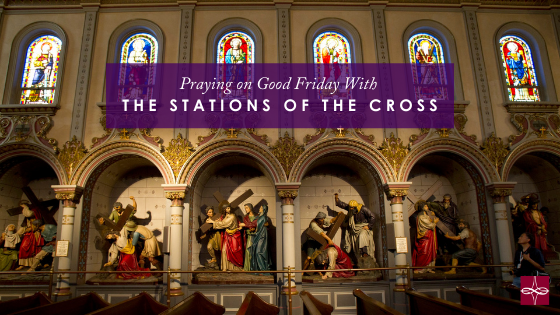
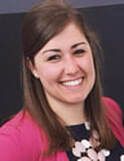


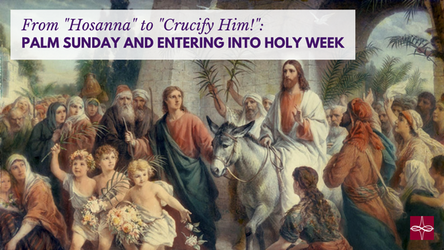

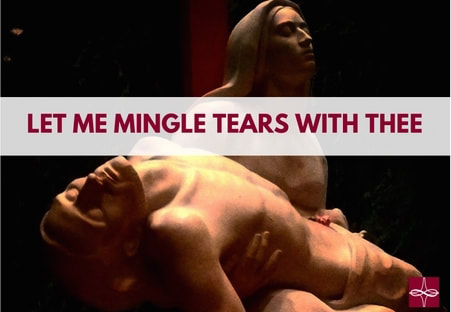

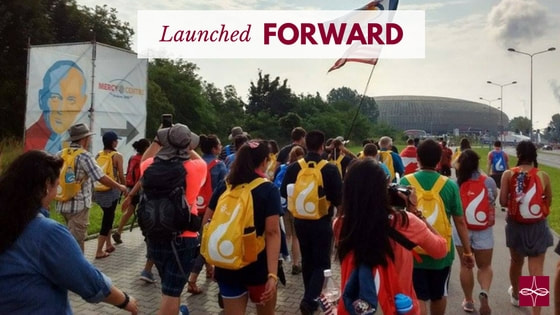

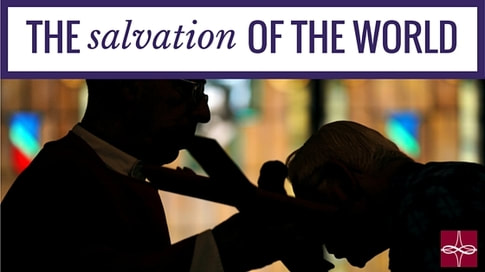

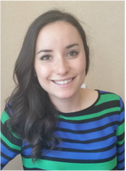

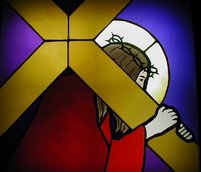
 RSS Feed
RSS Feed